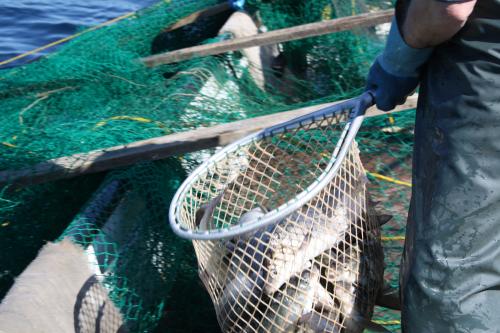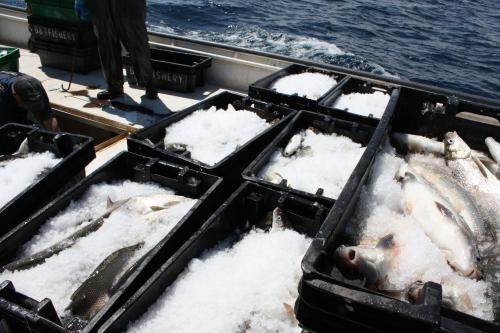Will climate change influence the management of Great Lakes Whitefish fishery?
Many environmental factors are at play in the Great Lakes, which may plan an important role in determining the future success of lake whitefish spawning.
Lake whitefish were an important food source for Native Americans around the Great Lakes well before the arrival of European settlers. Those early European explorers to the Great Lakes praised the lake whitefish for its fine flavor and abundance, and began to recognize its importance in the region. Today, the Great Lakes commercial fishery for lake whitefish is managed for sustainability with most of these fish caught from Lakes Superior, Huron, and Michigan. Great Lakes whitefish from Michigan’s highly 
Michigan Sea Grant and Michigan State University Extension recently held an educational session at the Michigan Fish Producers Association Annual Conference. At the conference, there was a presentation on designing a climate change decision-support tool for harvest management of Great Lakes whitefish. This research, performed by Michigan State University Ph.D. student Abigail Lynch and Bill Taylor, professor of the Department of Fisheries and Wildlife at Michigan State University and Associate Director of Michigan Sea Grant, examined climate factors influencing recruitment of lake whitefish to the commercial fishery.
To recruit to the fishery, a lake whitefish must survive a treacherous journey from the egg to larva to juvenile and finally to the adult phase. It is important to know how many lake whitefish enter the fishery so it can be determined how many can be harvested without negatively impacting future populations and harvest. This research project examined climate factors, specifically temperature, wind, and ice cover, which have been shown to influence recruitment of lake whitefish to the commercial fishery. Because lake whitefish spawn in the fall and hatch as larvae in the spring, these times are particularly critical to the survival of lake whitefish. Historical data was used to model how changes in these climate variables affected recruitment. Earlier research has observed a positive relationship between recruitment and spring temperatures and ice cover, and a negative relationship between recruitment and fall temperatures and fall wind speed. This research confirmed these same patterns. Warmer spring temperatures may improve survival of larval lake whitefish if food resources are available, and increase lake whitefish production in the Great Lakes. However, warmer fall temperatures, more wind and less ice cover may inhibit egg survival and, consequently, lake whitefish production.

Using the climate-recruitment model, this research project was able to project anticipated impacts on lake whitefish recruitment using their climate-recruitment model and a downscaled climate model developed for the Great Lakes for the 1836 Treaty Waters of Lakes Huron, Michigan, and Superior. The 1836 Treaty Waters currently sustain a highly productive lake whitefish fishery, approximately 25 percent of the whole fishery in the upper Great Lakes. Recruitment projections varied between management units; some experienced up to a 50 percent decline and others had as much as a 220 percent increase. Overall, this research suggests that there is potential for increased lake whitefish recruitment in the Great Lakes with climate change, and some shift in the distribution of the fishery.
For more information on this research project, visit the Climate Change and Lake Whitefish Project page within the Michigan Sea Grant website.



 Print
Print Email
Email


